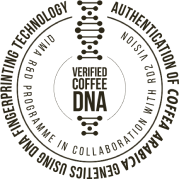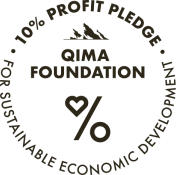30.
Ammar Al Siyaghi
Jury code : 3350
jury score :
87.59
Genetics :
Yemenia
Process :
Natural
lot size :
110.00LBS
traceability
VILLAGE :Hejrat Al Ain
REGION : Hayma Dakhiliya
GOVERNORATE : Sana'a
ALTITUDE :2000-2300masl
FLAVOUR PROFILE
Jasmine, Red Grape, Passion Fruit, Raisin, Brown Sugar, Cocoa Nibs
Ammar Al-Siyaghi
In the mountain village of Hejrat Al Ain, between 2,000 and 2,300 metres above sea level, Ammar Al-Siyaghi tends 400 coffee trees spread across nine terraces. Born in 1986, Ammar grew up in a family where farming was inseparable from identity. From childhood, he followed his father into the fields, learning to irrigate, prune, and harvest by hand—skills passed down through generations in Hayma Dakhiliya.
Today, Ammar continues this lineage with a determination shaped by both tradition and challenge. Water scarcity remains his greatest obstacle, yet he persists, guided by the belief that well-nurtured trees repay effort with quality. His entire harvest this season weighed 110 pounds, a reflection of the demanding environment and his careful stewardship of each tree.
Ammar speaks of coffee as something greater than livelihood. To him, it is a heritage to preserve and a responsibility to strengthen. He looks to the future with hope that genetically verified seedlings will boost yields and secure the role of coffee in sustaining his community. His vision is for coffee to take the place of qat in the terraces, ensuring that future generations see in the trees what he calls “a treasure, worth more than gold.”
This year’s lot, a Yemenia variety naturally processed, carries the mark of both place and farmer: lifted florals, layered fruit, and a deep sweetness, shaped by altitude, soil, and four decades of family knowledge. For Ammar, every cup reflects not only the land of Hayma Dakhiliya, but the endurance of its people.

